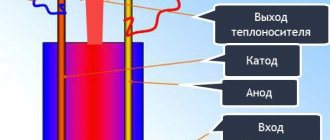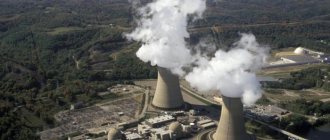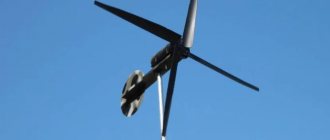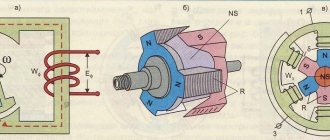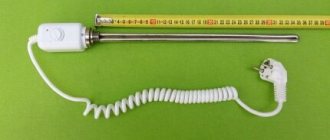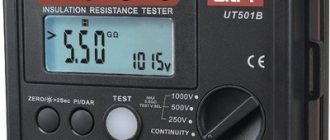The energy industry copes with its task quite confidently, but the scale of our country is such that it is not yet possible to fully provide electricity to all remote or hard-to-reach areas. This is due to many factors that are too expensive or technically unattainable to overcome under current conditions.
Therefore, more and more attention has to be paid to alternative sources that can meet the needs of backward regions without the participation of backbone networks. A promising direction is wind energy, which uses a free source of energy - the power of the wind.
Design and types of wind power plants
Wind power plants (WPPs) use wind energy to generate electricity. Large stations consist of many wind generators, united into a single network and powering large areas - towns, cities, regions. Smaller ones are capable of providing small residential areas or individual houses. Stations are classified according to various criteria, for example, by functionality:
- mobile,
- stationary.
By location:
- coastal
- offshore
- ground
- floating.
By type of construction:
- rotary,
- vane.
Vane stations are the most widespread in the world. They are highly efficient and capable of producing large enough amounts of electricity to supply consumers throughout the entire energy industry. At the same time, the distribution of such stations has a specific configuration and is not found everywhere.
Modern methods of generating electricity from wind energy
Science, like consciousness, does not stand still. Wind energy methods are improving every year, as is humanity’s need for alternative technologies. More and more countries are using wind turbines, wind turbines or wind turbines to generate electricity.
Turbines are the latest achievement of science in the field of wind energy production. It is the largest part of it that is generated with their help. Visually, they look like giant helicopter propellers on a stable vertical base.
The amount of wind energy generated directly depends on the size of the turbine itself and its blades.
The operating principle is as follows. The wind turns the blades, which in turn turn a shaft connected to a generator that produces electricity. The stronger the wind, the greater the amount of energy generated and, by the way, practically no water is used to generate it, unlike other types of energy.
The newest turbines have a rotor size (aka shaft - the place in contact with the energy generator) exceeding 120 m and generate power up to 2 megawatts. This is the norm for providing electricity to 800 residential buildings.
There are already several hundred thousand wind turbines in the world that supply electricity to many homes, neighborhoods and businesses. There are big ones and small ones. The windmill for electricity of our time is a steel tower whose height reaches up to 130 m. At its top there is a generator, rotor and blades.
For example, in Germany they built a wind turbine 120 m high, it produces up to 5 megawatts, and its blades reach up to 53 m in length and about 6 m in width. With the result of its activities, it can fully provide up to 900 modern houses, that is, small cities. And Norway has launched construction of an even more powerful wind turbine, which, according to previous forecasts, will power up to 2,000 residential buildings.
In addition to sushi, they are also placed on water. The highest electrical windmill in the world, which is even included in the book of records, stands at an altitude of 4100 m above sea level in the province of San Juan. Its installation was managed by Barrick Gold, a gold mining company.
But it is important to know that this type of energy cannot be used in all regions of planet Earth. It all depends on the wind speed at a height of 20-30 m above the ground.
To generate useful energy, a powerful air flow is needed, which can reach the value required for its conversion.
Therefore, wind power plants are profitable precisely in those regions where the wind speed is up to 6.5 m/sec.
This is suitable for areas where other sources of energy and fuel are expensive, impossible or unprofitable. According to the most optimistic forecasts of industry scientists, by 2050, 1/3 of our planet’s electricity needs will be provided by wind, at the current rate of stable development of wind energy.
Principle of operation
As already mentioned, wind farms have a rotor or vane design. Rotary stations, as a rule, have devices with a vertical axis of rotation. They are in many ways more convenient than winged ones, since they do not make much noise during operation and do not require installation in the direction of the wind. At the same time, rotor designs are less efficient and can be used at small private stations.
Wing devices are capable of producing maximum effect. They use the resulting energy much more efficiently than rotary samples, but require correct orientation in relation to the flow, which means the presence of additional devices or equipment.
All types operate on the same principle - the wind flow spins the moving part, which transmits rotation to the generator, as a result of which an electric current is formed in the system. It charges the batteries, which power inverters that convert the resulting current into a standard voltage and frequency suitable for consumer devices.
To supply a large number of consumers, individual wind generators are connected into a system, forming stations - wind farms.
Areas of use
Wind energy is used not only in the production of electricity (although in South Korea and China it is already possible to squeeze out up to 7.9 GW/year from one installation, thereby powering small factories, and in Northern Europe and the USA many farms operate on wind). In some places, the force of air masses still makes the millstones turn. Meteorologists also use the wind for research purposes - it shows them the directions of global air flows.
And again about electricity. In the 3rd millennium, hurricanes are learned to be used as an alternative (to conventional wind) source of electricity. A flow with a force of 30 m/sec (the slowest hurricane) carries one and a half terawatts of kinetic energy. Research is already underway that will make it possible to “ride” this fleeting, still uncontrollable force...
Advantages and disadvantages of wind power plants
The advantages of wind farms include:
- independence from fossil resources;
- An absolutely free energy source is used;
- environmentally friendly method - no harm is caused to the environment.
At the same time, there are also disadvantages:
- the unevenness of the wind creates certain difficulties in generating energy and forces the use of a large number; batteries;
- windmills make noise when operating;
- The efficiency of wind power plants is low and it is very difficult to increase it;
- the cost of equipment and, accordingly, electricity is much higher than the price of network electricity;
- The payback on equipment decreases significantly as its capacity increases. The most productive stations do not fully pay for themselves.
The use of small stations can provide energy to a limited number of consumers, so large devices are required for large settlements or regions. At the same time, high-power wind turbines require appropriate wind flows and uniformity of its movement, which is not typical for the conditions of our country. This is the main reason for the low prevalence of wind turbines compared to European countries.
Demand
Today, wind energy is used by people more and more actively.
As of 2015, wind energy ranks in the overall energy balance:
- Denmark – 42%;
- Portugal – 27%;
- Spain – 20%;
- Germany – 8.6%.
The countries listed are leaders in generating electricity from wind. India, the USA, and China are trying to join this list.
Leading countries in the world are making plans to increase the number of wind farms. China and some EU countries are passing laws on the use of renewable energy sources and increasing capacity. All this contributes to the development of wind energy.
Economic justification for the construction of a wind farm
From an economic point of view, the construction of a wind farm makes sense only in the absence of other methods of energy supply. The equipment is very expensive, maintenance and repair require constant costs, and the service life is limited to 20 years, and this is in European conditions. For Russia, this period can be reduced by no less than a third. Therefore, the use of wind power plants is economically ineffective.
On the other hand, in the complete absence of alternative options or in the presence of optimal conditions that ensure high-quality and uniform operation of wind turbines, the use of wind farms becomes a completely acceptable way to supply energy.
Important! We are talking specifically about large stations that supply entire regions. The situation with household or private stations looks more attractive.
Global wind distribution
To correctly calculate the installation location of a wind power plant, many factors must be taken into account. Regions with high potential are considered to be places where the average wind speed is about 9 m/s. Such places include Latin America, Greenland, western and northern parts of Europe, central Asia, and central North America.
Assessing wind resources is a complex process. Main factors to pay attention to:
- what winds prevail;
- relief and altitude of the area;
- the presence of reservoirs, vegetation, and various buildings.
Most of the land is not suitable for the location of such stations. The starting speed for generating electricity is 4 m/s. The optimal speed is about 10 m/s.
Capacity of industrial stations
Industrial wind farms have very high power, capable of supplying large settlements or regions. For example, the Gansu wind farm in China has 7965 MW, Enercon E-126 produces 7.58 MW , and this is not the limit.
It should be noted right away that we are talking about leaders in wind energy; other models produce much less energy. However, when combined into large stations, wind turbines are capable of producing quite a sufficient amount of electricity. The combined complexes generate a total power of 400-500 MW, which can easily be compared with the productivity of hydroelectric power stations.
Small stations have more modest indicators and can only be considered as point sources that supply a limited number of consumers.
Advantages of wind power plants
- Wind is a renewable and virtually inexhaustible source of energy.
- Wind power plants do not produce carbon monoxide (CO), carbon dioxide (CO2) and oxides of nitrogen and sulfur, dust pollutants and other hazardous waste.
- Once built, a large wind turbine is relatively easy and cheap to maintain.
- Wind farms have the potential to reduce dependence on fossil fuels, hydro resources and nuclear reactors for electricity production.
- Large wind turbines can be spread widely across the landscape. This allows power sources to be distributed across regions and helps create a fault-tolerant power supply system (protected from catastrophic failures and terrorist attacks).
- Wind energy can be used as an additional source of energy along with other methods of producing electricity. This will diversify the country's electricity supply system.
- Large wind turbines can be placed on offshore platforms - on large lakes, in the ocean, as well as on land.
- Even the largest wind turbines take up little space, and other activities can be carried out in their locations - farming or cattle breeding, for example.
Geography of application
Wind energy is most widespread on the west coast of the Atlantic, in particular in Germany. There are the best conditions - smooth and strong winds, optimal climatic indicators. But the main reason for the widespread use of wind power plants in this region was the lack of opportunities for the construction of hydroelectric power plants, which forced the governments of the countries in this region to use available methods of generating electricity. At the same time, there are installations in the Baltic region, Denmark, and Holland.
Russia is still lagging behind in this matter; over the past decade, barely a dozen wind farms have been commissioned. The reason for this lag lies in the great development of hydropower and the lack of proper conditions for the operation of industrial wind power stations. However, there is an increase in the production of small installations capable of providing energy to individual estates.
Development prospects
If we take into account that there is now a focus on natural environmental methods of energy extraction, then wind energy will have a positive development outlook in the coming years. New and improved models of wind turbines are being developed all the time. One of the latest developments is floating generators that can harness the maximum power of the wind.
More and more countries in the world are paying attention to wind energy and are starting to build their own wind turbines in suitable areas. Wind energy is considered one of the most promising alternative energy sectors.
More often in demand are private wind generators, which can provide part or all of the house with energy. Traditional energy sources may soon run out and also cause irreparable harm to the environment. Many people believe that wind energy, as well as alternative environmentally friendly methods of energy production, is the future.
Facts and Misconceptions
The low prevalence of wind power plants and the lack of experience with them have given rise to a lot of misconceptions regarding the properties and impact of wind power plants on the human body. Thus, there is a widespread belief that the noise level produced by an operating wind generator is unusually high. Indeed, there is some noise, but its level is much lower than is commonly believed. Thus, the noise from industrial models at a distance of 200-300 m is perceived by ear in the same way as the sound from a working household refrigerator.
Another problem that is unreasonably exaggerated by ignorant people is the creation of insurmountable interference with radio and television signals. This issue was resolved before users knew about it - every powerful industrial windmill is equipped with a high-quality radio interference filter that can completely eliminate the device’s influence on the airwaves.
People living near turbines will constantly be in the shadow flickering zone. This is a term that refers to the uncomfortable sensation of flashing light displays. Rotating blades create this effect, but its significance is greatly exaggerated. Even the most sensitive people can always simply turn away from a turbine if they happen to be close to it.
There are other, far-fetched and quite real facts regarding the operation of wind farms, their impact on the human body and the surrounding nature. Some of them are ordinary rumors, others are so exaggerated that they do not even deserve discussion. Wind energy is a full-fledged industry capable of solving energy supply issues both on a large scale and within the confines of a small country house.
Pros and cons of wind energy
Offshore wind turbines
The obvious advantage of wind energy is the virtual infinity of resources: as long as the planet has an atmosphere and the Sun is shining, there will be movement of air masses, which can be used to generate energy.
Another undoubted plus: environmental friendliness. Wind power plants do not emit any harmful substances and do not pollute the environment. Unfortunately, they still cannot be called completely environmentally friendly, since the wind power plant is quite noisy, and therefore in Europe the noise level limit for daytime and night time is legally established, which wind power plants must not exceed. In addition, the operation of wind power plants has to be stopped during the seasonal migration of birds (there is also a legal restriction on this case in Europe). In Russia there are no such restrictions, but wind power plants are not located near residential buildings - based on the convenience of the population.
Along with such a plus as the inexhaustibility of the energy source, there is also a minus: the efficiency of a wind power plant depends on the time of year, time of day, weather conditions and geographic location. Unfortunately, wind speed varies depending on all these parameters, and since wind energy is kinetic, it is directly related to speed (E = m×v2/2) - the higher the speed, the correspondingly more energy the wind turbine generates. Therefore, wind power plants usually have to be used together with other energy sources, and also use batteries that would receive excess energy on windy days and release it during calm days.
The advantages of wind power plants include the speed of construction of a wind turbine: even an industrial installation requires no more than two weeks, taking into account the time spent preparing the site, but a household wind generator, suitable for supplying energy to a private house or cottage, is installed in a matter of hours.
Sometimes the disadvantages of wind power plants include the rather large area that wind turbines occupy (a power plant can contain a hundred or more wind power plants). However, along with onshore wind power plants, coastal ones are now being installed (their significant advantage is the stability of operation - due to sea breezes), shelf ones (located in the sea at a considerable distance from the coast (10-60 km), do not occupy land plots, are very effective , since sea winds are regular and have significant speed).
Private wind farms
For Russia, the most pressing issue is the distribution of small stations that supply one house or estate. The construction of large wind farms in the climatic conditions of our country is impractical and unprofitable. The greatest value of wind turbines lies in the ability to provide energy to backward or remote communities where there is no grid connection.
For such areas, the use of small private stations is the best way to solve the problem, since the operation of a wind turbine does not require the provision of fuel, the device is simple and can be easily repaired. Providing such regions with additional equipment is much easier and cheaper than allocating large amounts of money for power transmission lines, especially when it comes to mountainous areas. Small wind turbines can generate a sufficient amount of energy without the need for maintenance or fuel costs, making them a very promising and attractive solution to the problem.
False theories
The most common myths about wind energy:
- Windmills kill birds. It’s hard to deny that birds sometimes crash into the blades or mast of a wind turbine and die. But just as many birds are killed by electrical wires. According to statistics, most birds die due to cat attacks.
- The most common false theory is that the noise from a wind generator can negatively affect human health, including complications with the hearing organs.
- Not an environmentally friendly source, since the increase in the number of wind farms increases carbon dioxide emissions. Yes, but compared to coal or gas power plants, this figure is 50 times less.
- Unemployment. There is a belief that generating energy this way will eliminate jobs, but this myth is easy to dispel. Unemployment cannot arise in any developing sector, since wind energy always needs new personnel - researchers, developers.
False theories appear due to ignorance of the topic, but all of them are easy to refute, which has been done many times.
Review of prices for popular models
The cost of wind generators is high. This moment is the most difficult to overcome for the spread of wind energy technologies. Many home owners would love to install wind turbines on their property, but do not have the funds to purchase them. An installation capable of providing lighting to an area costs about 100 thousand rubles.
A more powerful design that allows you to supply electricity to a cottage will cost 250 thousand.
A wind farm capable of supporting a small farm costs about 500 thousand rubles. And this is not the limit. At such prices, one cannot expect a rapid spread of wind generators, so all hope is for the emergence of domestic models that can solve the issue of high cost of equipment. Alternatively, you can buy a relatively inexpensive Chinese model. Such devices cannot be repaired, being, in fact, disposable, but their price is much lower than the cost of Western models of similar power.
Main types of wind generators
First of all, wind generators are usually divided into vertical and horizontal . These groups are so called because of the location of the axis of rotation of the impeller. Horizontal structures resemble a propeller or fan, while vertical ones are close in structure to a carousel. This division is conditional; currently there are designs that combine elements of both groups. There are also certain devices that cannot be classified into these categories.
Payback period and savings calculation
For your individual wind installation, this period is NEVER.
The cost of a windmill, mast and additional equipment for 2-kilowatt high-quality models will reach an average of 200 thousand rubles. The productivity of such installations is from 100 to 200 kW per month, no more. And this is in good weather conditions.
Even precipitation reduces the power of wind turbines. Rain by 20%, snow by 30%.
So your entire savings turns out to be 500 rubles. In 12 months of continuous work, a little more will accumulate – 6 thousand.
But if you remember the initial expenses of 200 thousand, then you will return it in thirty-two years!
And all this without taking into account operating costs. And if you estimate that the average service life of a good windmill is about 20 years, then it turns out that it will completely and irreparably break down even before it reaches its payback period.
At the same time, a 2-kilowatt unit will not cover 100% of your needs. Maximum by a third! If you want to connect everything entirely from it, then take a 10-kilowatt model, no less. This will not change the payback period.
But here there will be completely different dimensions and weight.
And simply attaching it to a pipe through the attic of your roof will definitely not work.
However, some are still convinced that due to the endless rise in price of electricity, a wind generator will one day become profitable.

